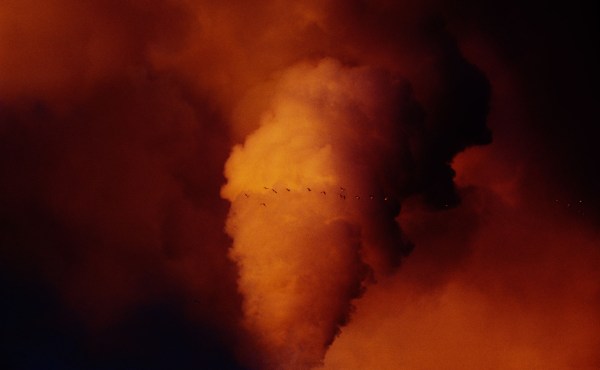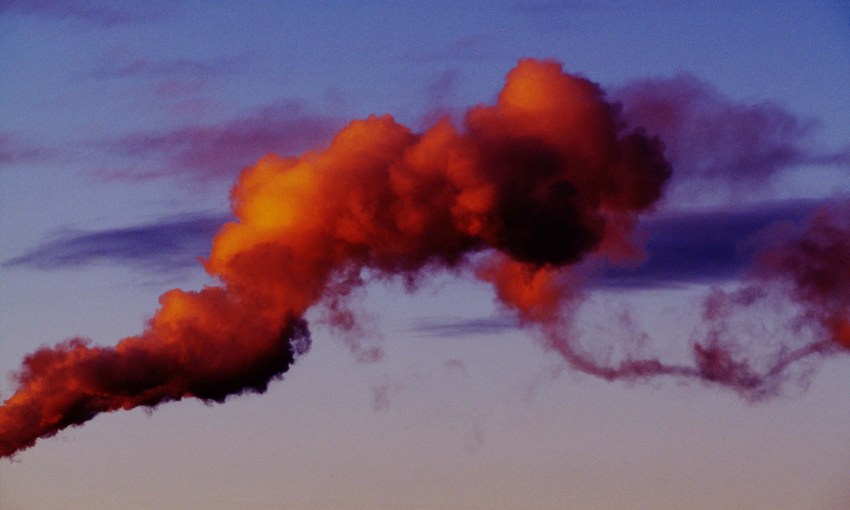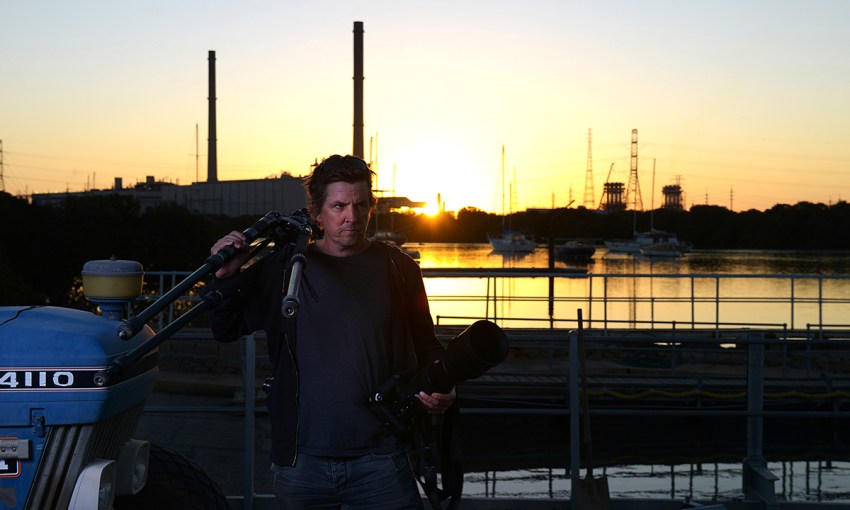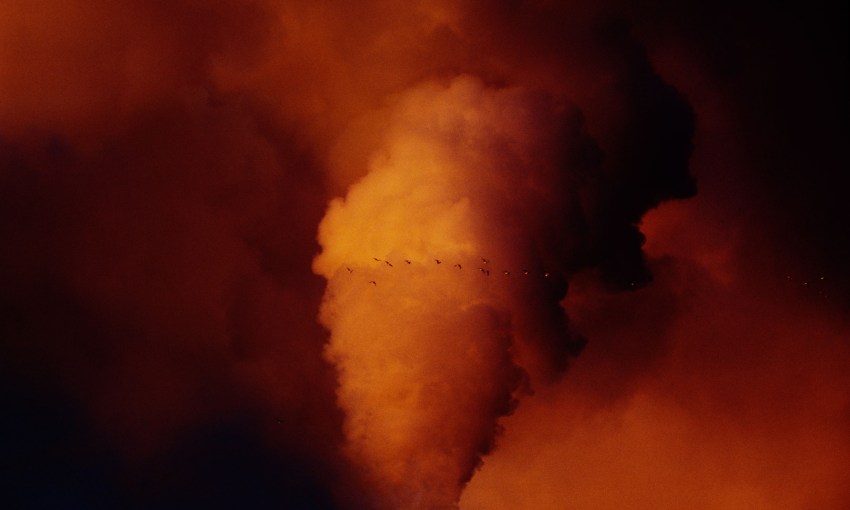One of Australia’s best contemporary artists, Trent Parke, had planned to retire from photography. Instead, this week sees the opening of The Crimson Line – his new exhibition documenting a global moment of change.
Through the ‘holy grail’ – a simple black box – light ignites life in Adelaide’s sky
In 2015, at the media preview of Trent Parke’s monumental exhibition The Black Rose, the artist was friendly, but he was not energetic. His sentences were cogent and never longer than they needed to be.
Four years later, a phone call with Trent begins with a burst of conversation that lasts 15 minutes without an initial interview question being asked.
The Crimson Line will be exhibited at Hugo Michell Gallery from 31 October – 23 November
“The Black Rose,” says Trent, “it was seven years of work. It nearly killed me and it was seven years of intense scrutiny on the meaning of life through the holy grail, as I would call it, the camera.
“By the end of it, I thought – I’m done here, I can’t do anymore. I have to say I didn’t think I’d go back to photography again.”
This week, Trent will open his first exhibition of photos since The Black Rose. The Crimson Line, being shown at Hugo Michell Gallery, is the collection of pictures that brought him back from the brink of packing it all in.
Between the two bodies of photography Trent has not been idle. He and creative collaborator and partner Narelle Autio created The Summation of Force – a work in three iterations that utilises moving image, virtual reality, and documentary. The virtual reality execution was exhibited at the Sundance Film Festival in 2018.

Artist Trent Parke – portrait by Andy Nowell
In experimenting with the power of film as a medium, Trent further solidified his decision to move away from photography.
“Once you introduce sound and music and all of those elements, you come back to photography and it’s so silent and so still and so singular,” he says.
His return to the stills camera, versions of which he has been using since he was 13, was gradual. He set himself the task of following up on one element of The Black Rose – a series of 365 consecutive photos of sunsets – by taking a photo every morning during the first five minutes of light that appeared during sunrise.
In this daily routine, Trent rediscovered his enthusiasm for using, “a single black box that just goes click”. And he became embroiled in a line of thinking and the pursuit of images that took him entirely by surprise.
“You become drawn to certain things and you don’t realise at the time why, but you know in your gut that you need to go stand there in the same spot for three weeks and something will happen,” he says.
“I became infatuated with this colour in the sky. I couldn’t let it go and I just kept chasing it.”
Suddenly, crimson was everywhere Trent looked.
He began researching the colour in a manner akin to that of a “mad scientist”. In this period, Trent became fixated on the cochineal insects – tiny bugs that live on prickly pear cacti, which are crushed up and used to provide a strong crimson hue in products like lipstick or food colouring.
As he considered how these bugs were caught up in the machinations of industry, and how their crimson colour palette was also closely associated with a vast array of elemental experiences – from birth to death to the exploding creation of a star – his exploration of a colour became something much bigger. It was an epic scope that felt familiar to a previous exhibition.

The Crimson Line. ‘Untitled 03’. 2019
“When I made Minutes to Midnight… that was at a time when the country was changing,” says Trent.
“In the years leading up to it there was September 11… and everything was about, ‘the terrorist attack is going to happen here in Australia’. So, it was the right time to go out and do this project and comment on what it was like to live in that period of time… What emotionally it felt like to be living in that period, in that decade where things changed.
“I started to think about it [The Crimson Line] as a second book to Minutes to Midnight… it looks at climate change and a lot of those bigger issues.”
Photographed mostly around Port Adelaide, but depicting a universe of turmoil that could be located anywhere on earth, the body of work is populated by strange plumes of smoke that almost seem to glow. It is also eerily devoid of signs of life.
While the forms of the photographs are often unfamiliar, the feelings they conjure are startlingly resonant. The Crimson Line has a rigorous thought process underlying its creation, but its real drivers are instinct and emotion – versions of those traits that are particular to Trent, and that would have been irretrievably lost from Australian photography had he followed through on his threat to pack away the camera.
The Crimson Line will be exhibited at Hugo Michell Gallery from 31 October to 23 November
These are a few influences that Trent cited as being relevant during his creation of The Crimson Line:
- Photography by the Hubble Space Telescope
- Horton Hears a Who! by Dr Seuss
- Oblivion by M83
- Everything by David Lynch







